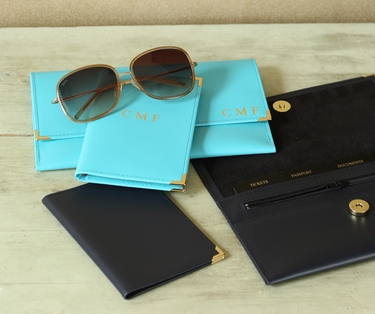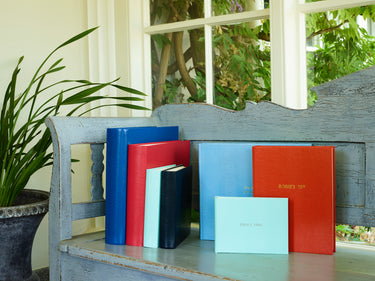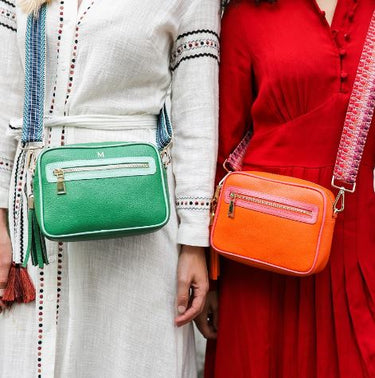Leather Care Guide

Fashion trends and the materials the clothes, accessories and other luxury goods which set these trends are made from, are constantly changing. Yet regardless of the season - or even the decade – leather has remained at the forefront of the fashion industry as effortlessly cool and chic.
If not for its stylish appearance, leather is highly sought after as a luxurious material due to its many other great qualities that make it so practical and SO desirable. However, due to the process taken to produce fine leather combined with its popularity, it is a material that is often not cheap.
Therefore, should you be fortunate enough to own luxury leather goods, it is best to know something about leather care. For this reason, and as retailers of luxury leather goods, we felt it important to write this article on the dos and do nots of how to clean leather to ensure your items live a long life.
How to store leather
Although leather is a famously durable material, it needs some TLC to keep it looking its best. To begin, it is important to think about where you store your item(s). A blanket rule for all leather goods is to make sure they are stored in a cool, dry place which is out of the way to avoid any accidental scratches and scuffs.
Naturally, where you store your item – whether it be on a shelf, in a cupboard or out on display – will depend on the type of item that it is. The properties that these areas all must have in common for the longevity of your goods however is that they ought to be cool, dry and out of the way.
The temperature of the environment is important to avoid the product either drying out and aging, for example from being left in the sun or by a radiator, or becoming damp and the leather moulding if the area is too cool or moist. As for the latter, naturally, we suggest that the leather is stored out of the way to avoid any accidental scratching.
For example, keeping your beautiful luxury photo albums such as the Chelsea Landscape Leather photo album neatly stored away on a shelf out of harms way. Or, if you own one of our Tote Bags or Cross Body Bags, try not to leave them overfilled for too long when not being used as this can result in a loss in the integrity of their shape. Taking care when storing you leather products in this way is a great first step in leather care.
Types of Leather
First and foremost, it’s important to remember that there are many different types of leather and some leathers need to be treated differently than others. The type of leather will indicate the best way to clean leather.
Generally speaking, your leather will either be grainy (as if a wrinkled skin), or smooth. When a leather is extra smooth this is called finished leather and can usually be cleaned with a quick wipe down to lift off any dirt.
Meanwhile, the rougher texture of a grainy leather means that it requires a little more care than a simple wipe off. To remove any marks or dirt we recommend taking more time to work into the crevasses, for example, by using a specialist brush to gently buff out any marks or residue.
In addition to the leather’s texture, you must keep in mind how your cleaning method will be affected by its colour as not to reverse the various treatments the leather will have gone through to make it look this way. For this reason, we suggest doing a patch test to see how the colour and texture of the leather is affected.
How to clean leather
While keeping in mind your understanding of how to clean the particular type of leather you own, when selecting which cleaning product, the type and intensity of the mark or stain will also help you decide.
Generally, the more natural the cleaning product the better, therefore we prioritise cleaning methods with household products.
So, what household product can you use to clean leather? The easiest method is to use mild soap (for example dish soap) and warm water – gently rubbing the marked surface like this, without rubbing so much that you scratch the surface, should help remove the mark.
How to clean gum off leather
However, if the issue is something thicker, such as stuck gum or wax, it is recommended to place a few ice cubes into a small bag and put this over the stuck material - hold it there for a few minutes. Once the ice has cooled the material enough to make it harden, it should take away the stickiness and make it easier to pick off.
Alternatively, if the substance you are trying to remove is from a liquid and not the sort you can pick off, the best treatment is usually another liquid. If warm water and soap doesn’t do the trick try use vinegar and olive oil. First you dab the vinegar directly onto the stained area and allow to dry. Once this is dry use the olive oil to wipe away the vinegar with a soft towel and this should hopefully bring the stain out too.
Cleaning heavy duty stains
For more heavy-duty stains, alcohol may be your best bet in the house. For this method, simply soak a section of a towel in the alcohol spirit and use your finger to rub the towel against the leather to remove the mark.
Aside from your ‘typical’ household products you might wish to use to care for leather, there are other products out there to keep your eyes peeled for depending on the purpose. As a general rule of thumb, avoid chemical, unnatural products to clean or maintain leather – these tend to damage the surface of the material.
For example, most leather we recommend conditioning to keep them feeling soft and not appear dry. Therefore, when selecting a leather conditioner opt for natural oils or beeswax to be safe. Conditioning leather will also help make it waterproof if maintained regularly.
Can you dry clean leather?
Dry cleaning leather is a complicated and often expensive process and therefore should only be sought out as a last resort. This is because the dry cleaner has to be a specialist in the treatment of leather given that any usual chemical treatment will ruin the material and reverse the painstaking work that went into making the leather appear as it does.
If you have read this article, you have already made a great first step in your leather care by simply having an awareness that leather is a luxurious material and it should be treated as such. Whether you wish for your luxury leather goods to last due to their sentimental significance or simply to avoid having to spend money replacing it, this leather care guide will help you on your way.
Now you’ve got the basics of leather care, make sure you check out our guide on the 5 common mistakes people make when maintaining leather.
Don't forget to take a look at our collection of leather photo albums and leather photo frames.


















